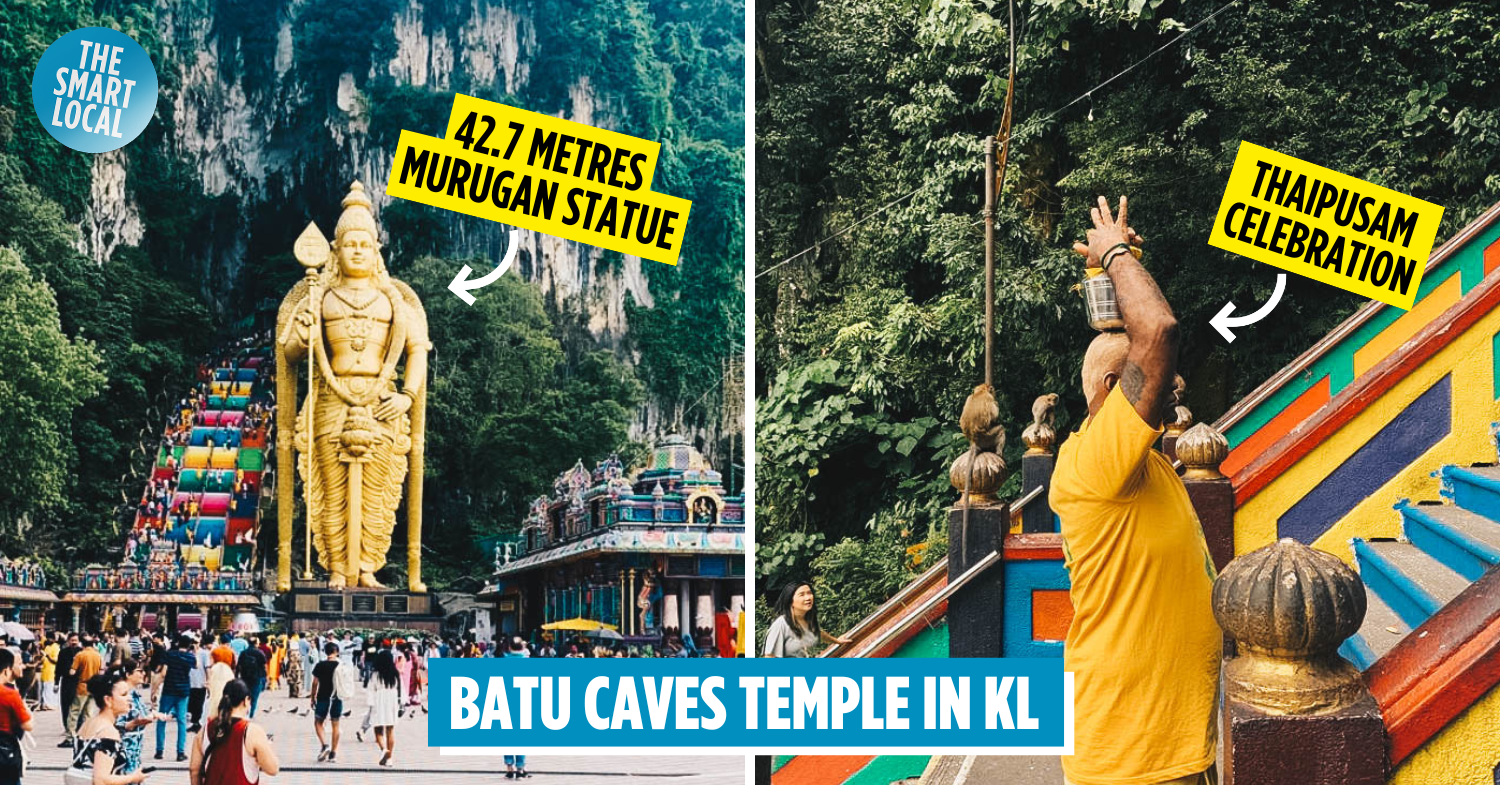Batu Caves guide
Malaysia is blessed with a myriad of Hindu temples, including the ones at Batu Caves. Boasting a towering golden statue of Lord Murugan and 227 rainbow steps, the iconic landmark of Malaysia is not only a cultural marvel that attracts locals and tourists alike, it’s also a place of deep spiritual significance for the Hindu community.
To help you plan your visit, we put together this guide of things to know before and during a visit to Batu Caves.
The history of Batu Caves and Lord Murugan
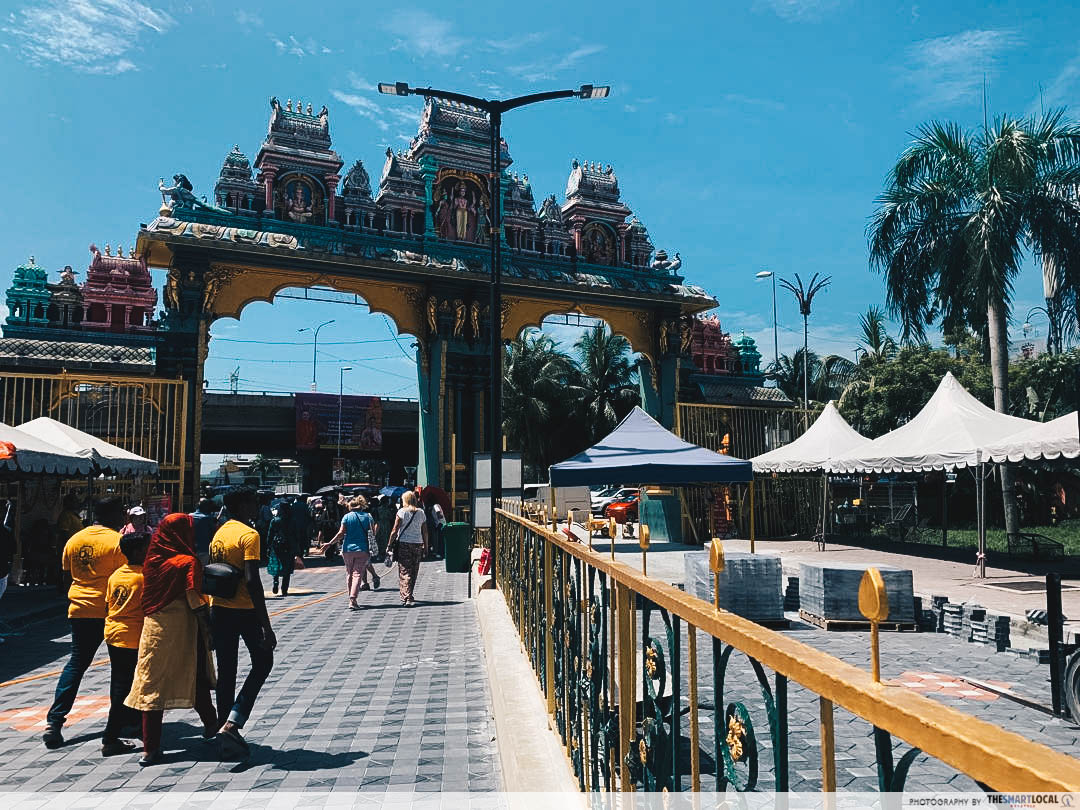
Tucked beside the MRR1 highway, the Batu Caves temple, also known as Sri Subramaniar Swamy Temple, is one of Malaysia’s most iconic landmarks.
The first temple in Batu Caves was built in 1891, though the caves themselves date back over 400 million years. Echoing with ancient prayers, the temple serves as a passage into a realm of devotion and stands as a significant pilgrimage site, attracting tourists from across the globe.
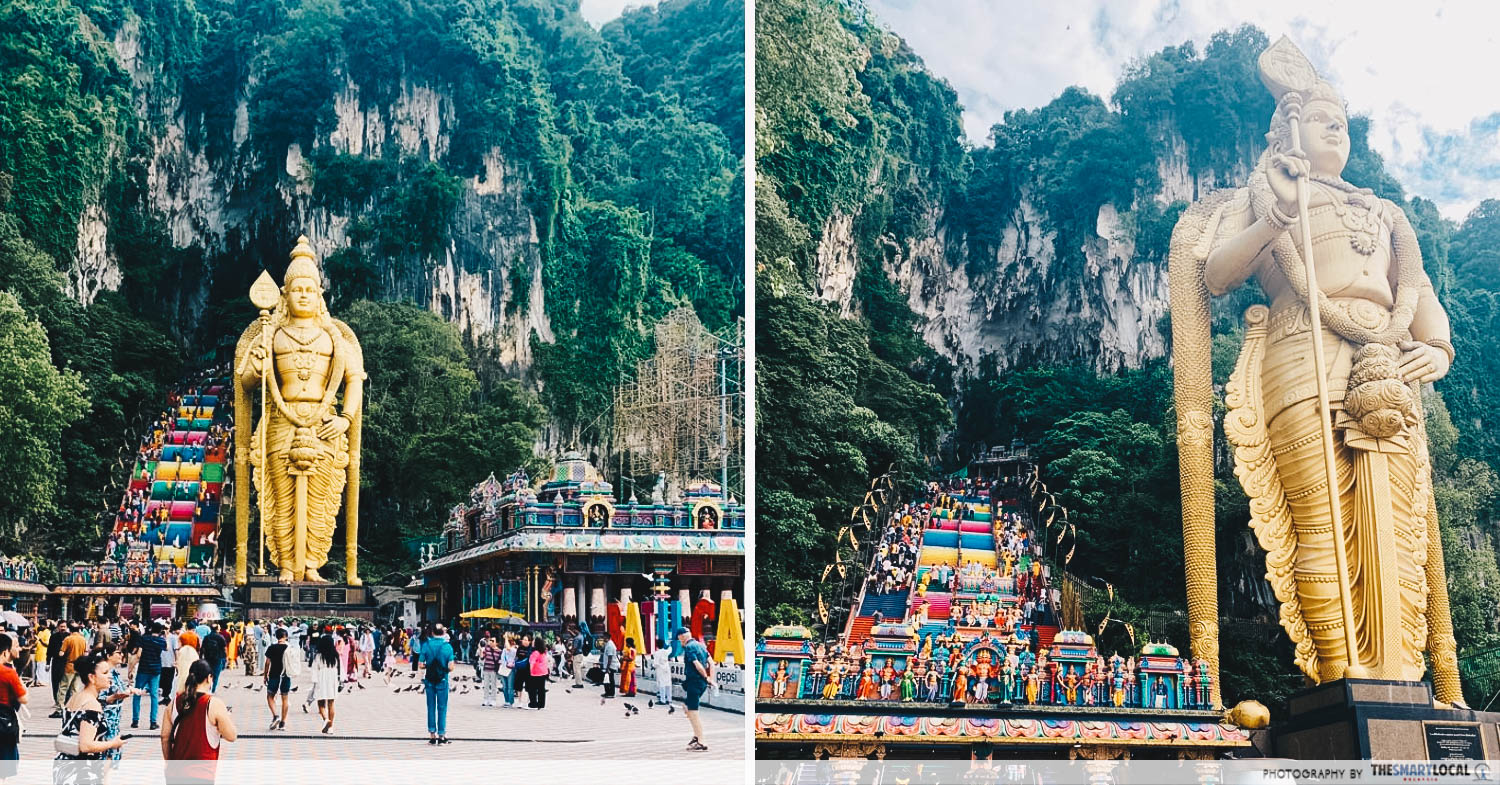
Standing at the entrance is the awe-inspiring golden statue of Lord Murugan, reaching an impressive height of 42.7 metres. It is the tallest statue of the deity in Malaysia and the second tallest in the world.
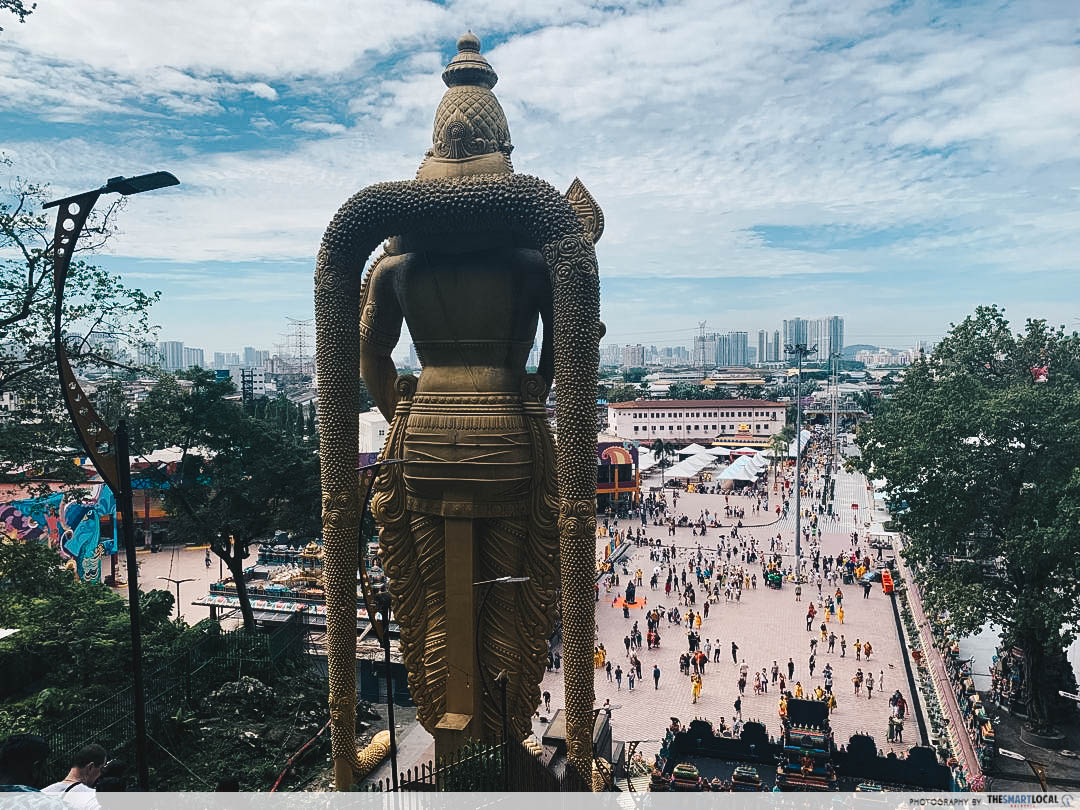
According to Hindu mythology, Lord Murugan embodies valour and wisdom and is revered as the god of war. As the son of Shiva and Parvati, he is believed to bestow intellectual blessings and fertility, making him an especially significant deity for children and mothers hoping to conceive.
Five temples and a plethora of shrines
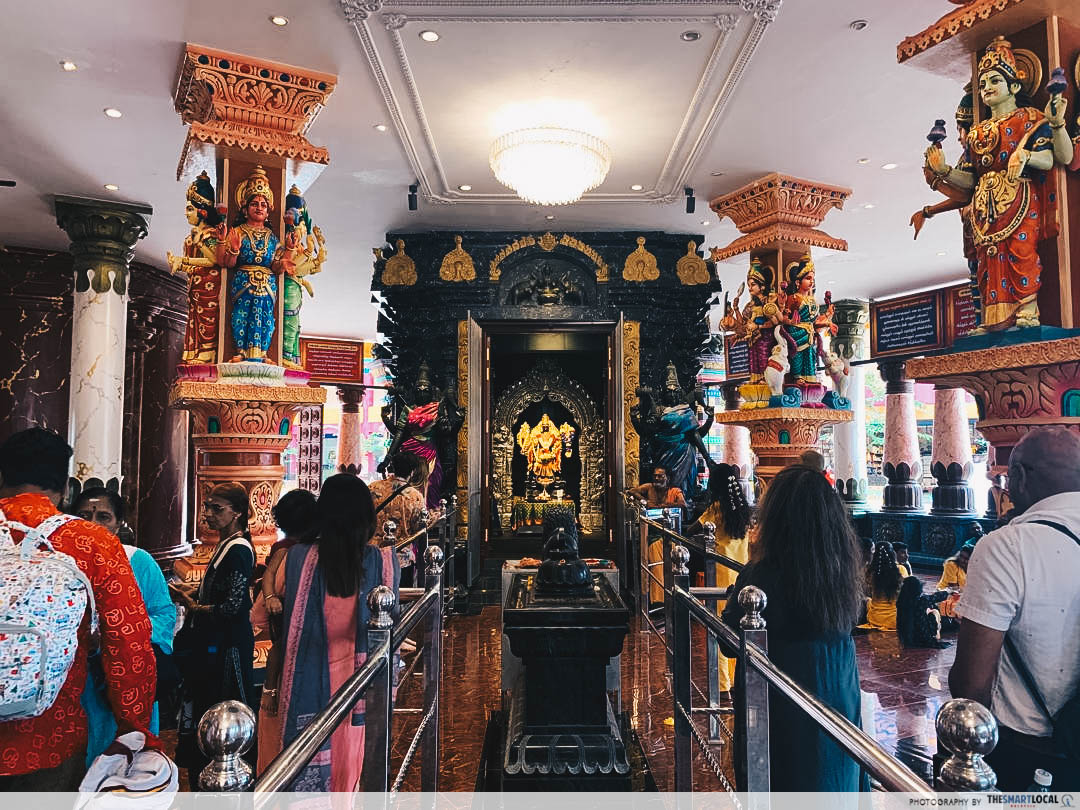
Batu Caves is home to five main temples and a plethora of shrines. At the base, visitors will find three temples to explore – Vishnu, Hanuman, and Navagraha Sannathi – before ascending the rainbow-hued staircase to the two main temples within the caves.
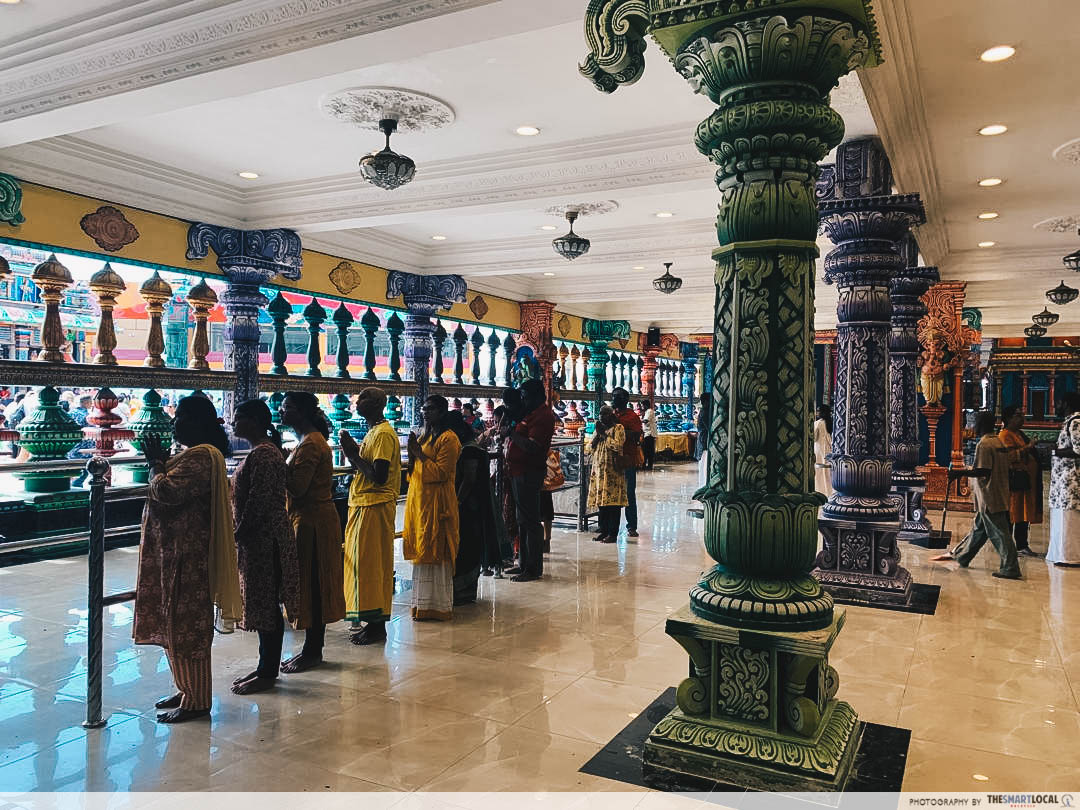
The Vishnu temple is dedicated to Lord Vishnu, the deity responsible for preserving and protecting the universe. Alongside him, Hindu deities such as the beloved goddess of wealth, Lakshmi, are also honoured.
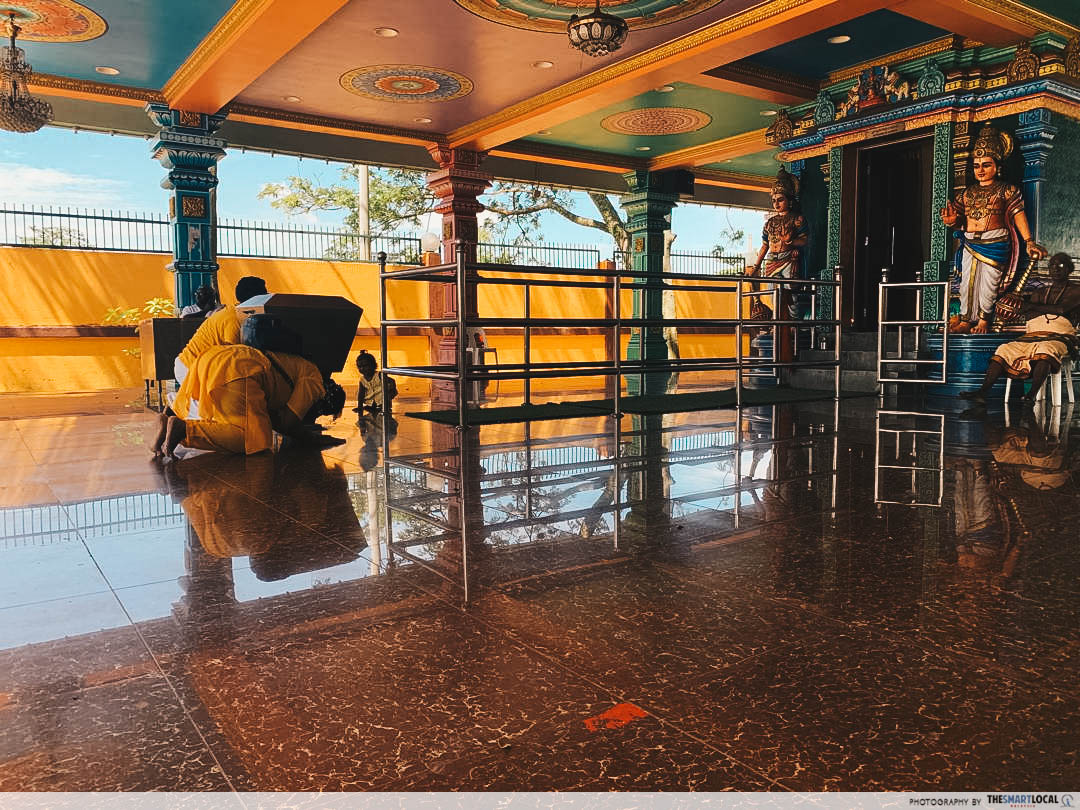
Towards the far end of Batu Caves stands the Hanuman temple, easily recognisable by its striking 15-metre-tall statue of Lord Hanuman. Worshippers visit this temple to seek blessings from the Hindu deity, who is revered for his immense strength and selfless service.
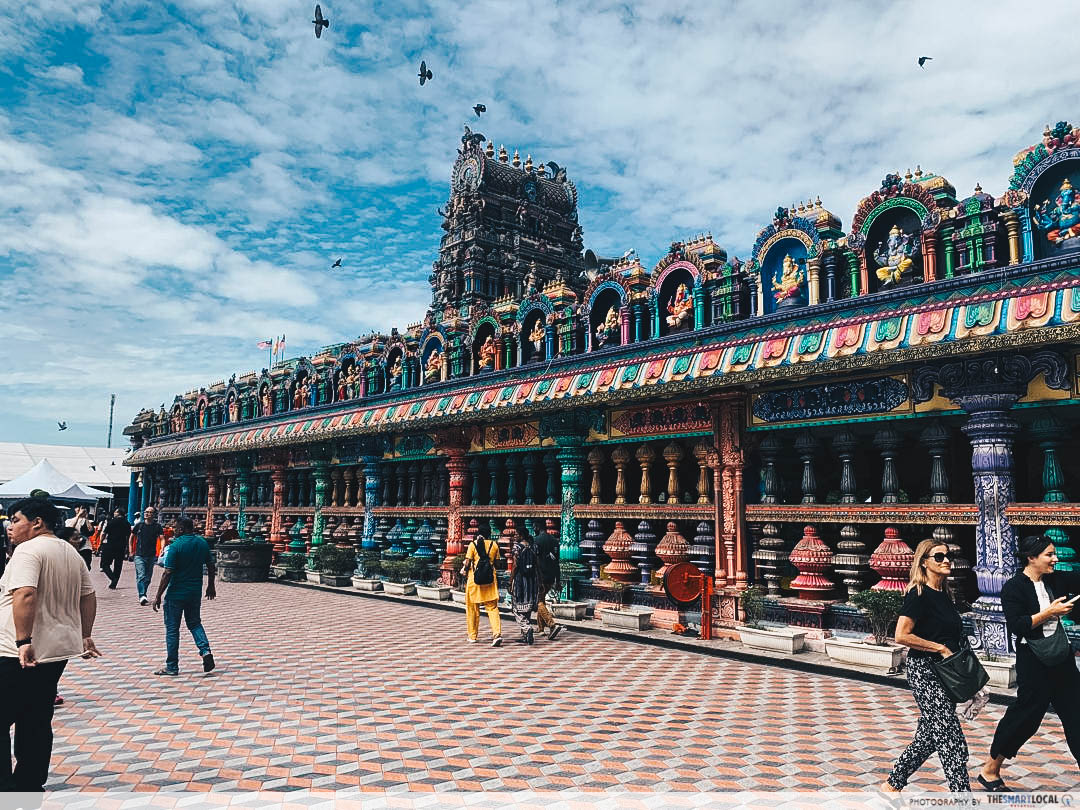
Over at the Navagraha Sannathi temple, nine Hindu deities are enshrined, which present the five planets in our solar system – Mercury, Venus, Mars, Jupiter, and Saturn – as well as the sun, the moon, and the two nodes of the moon.
272 rainbow steps up to the main cave temples
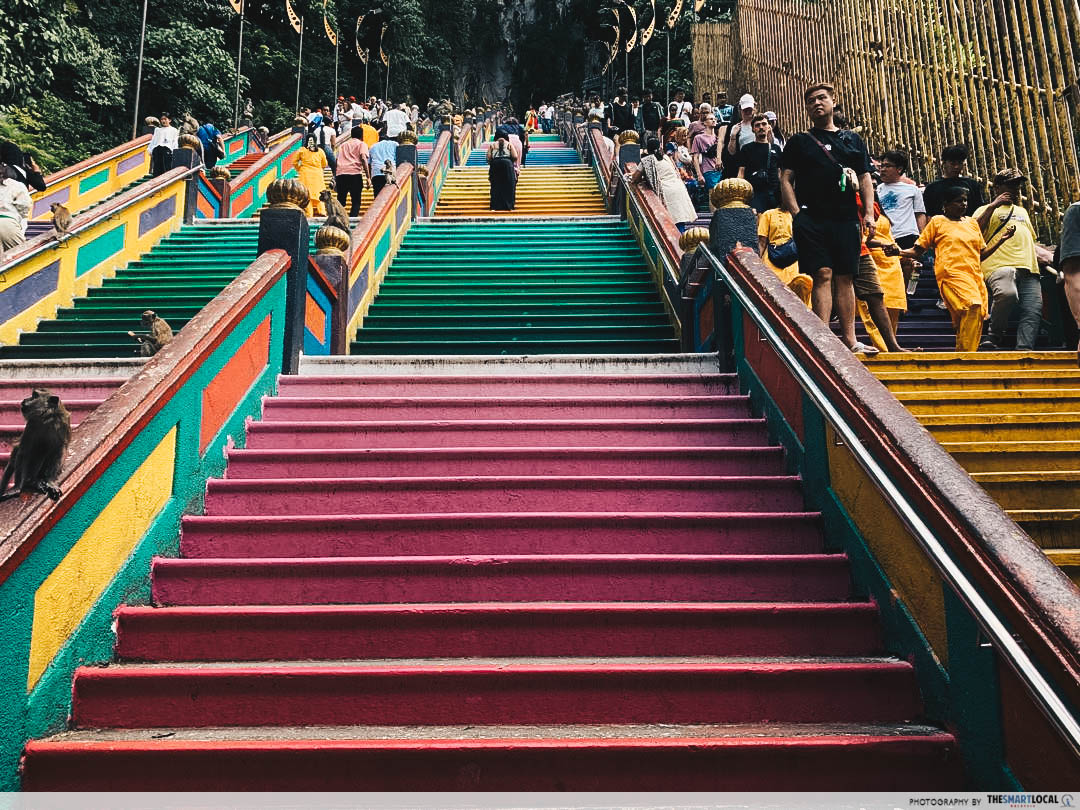
One of Batu Caves’ most captivating features is its 272 vividly painted steps leading to the main temples. The staircase is IG-worthy with its kaleidoscope of colours, making it a picturesque backdrop for photographs.
Along the arduous ascent, visitors will encounter mischievous monkeys darting between railings and ledges. While these monkeys are generally harmless, they can become bold when food is present, so it is advisable to keep snacks and drinks securely stored.
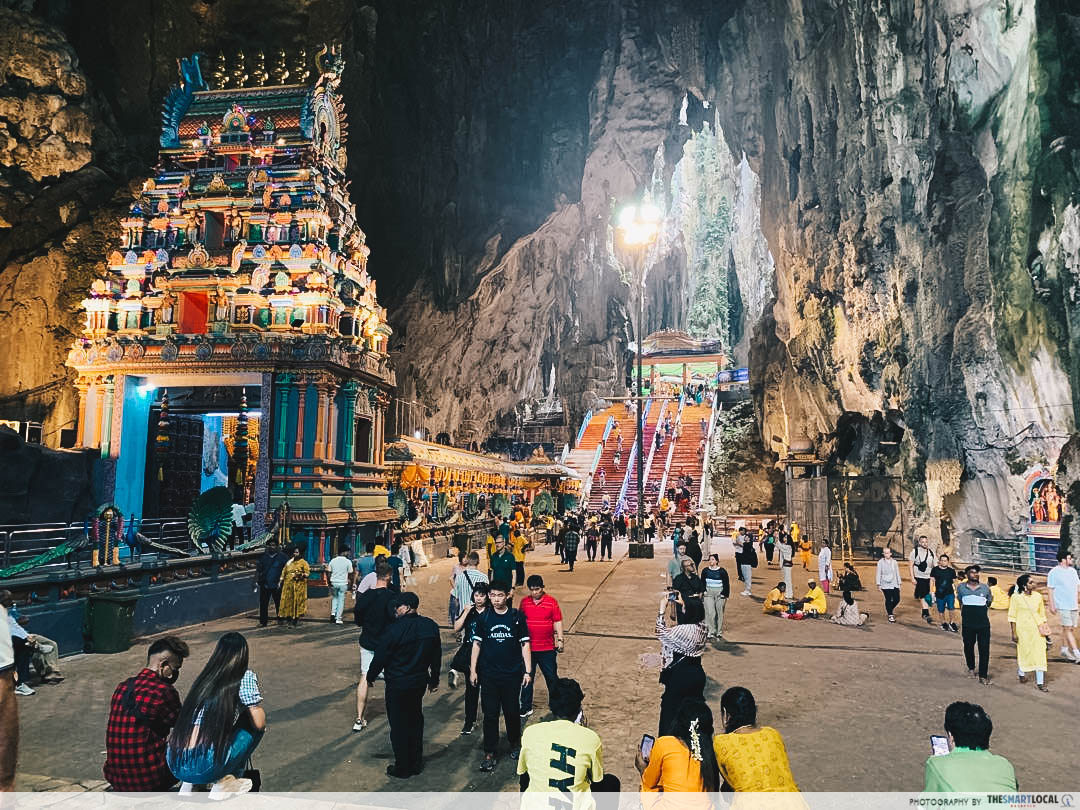
At the summit, visitors are welcomed into the main temple, home to a variety of Hindu shrines and statues all set within a breathtaking natural limestone cavern. The high ceilings and rugged rock formations create a mystical ambience, enhancing the temple’s spiritual essence. A short climb up another set of stairs will further reveal the next main temple, nestled among stunning rock formations. With birds soaring overhead and monkeys calmly observing from a distance, this sacred space seamlessly intertwines nature’s grandeur with spiritual reverence.
Other things to do at Batu Caves
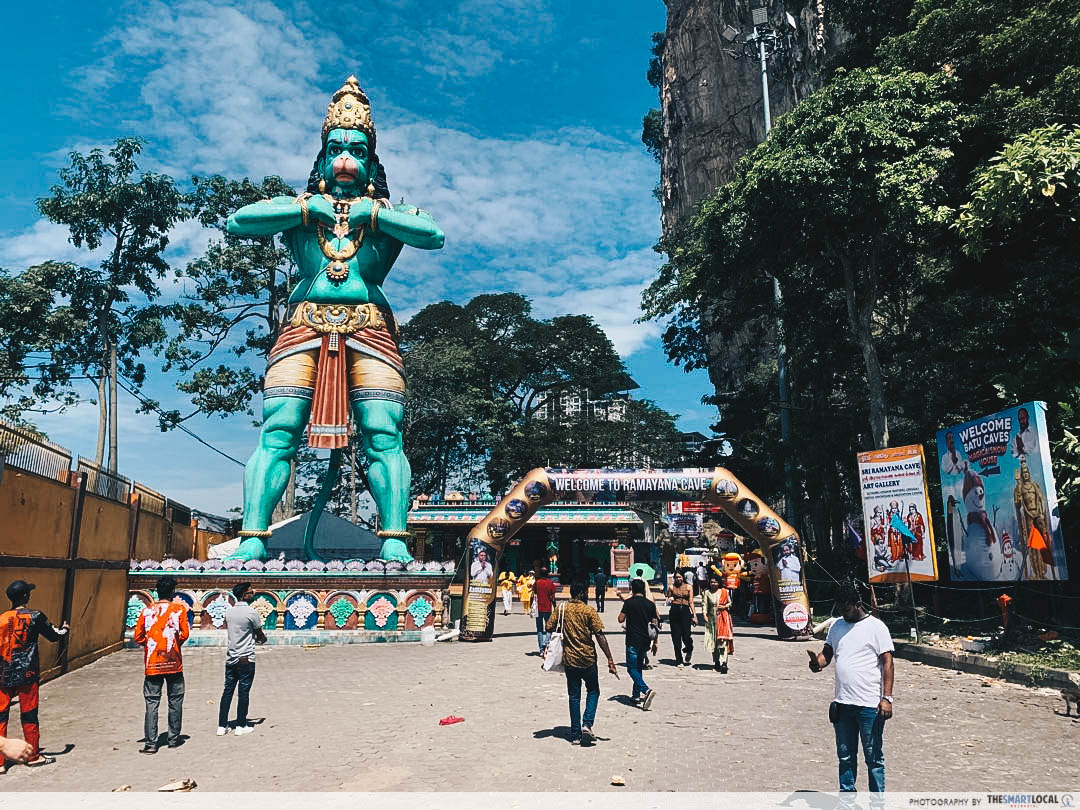
Beyond exploring the temples, visitors can also discover the Ramayana Cave, located near the landmark’s main entrance. This museum-like cave presents a fascinating display of dioramas depicting the ancient Indian epic, the Ramayana.
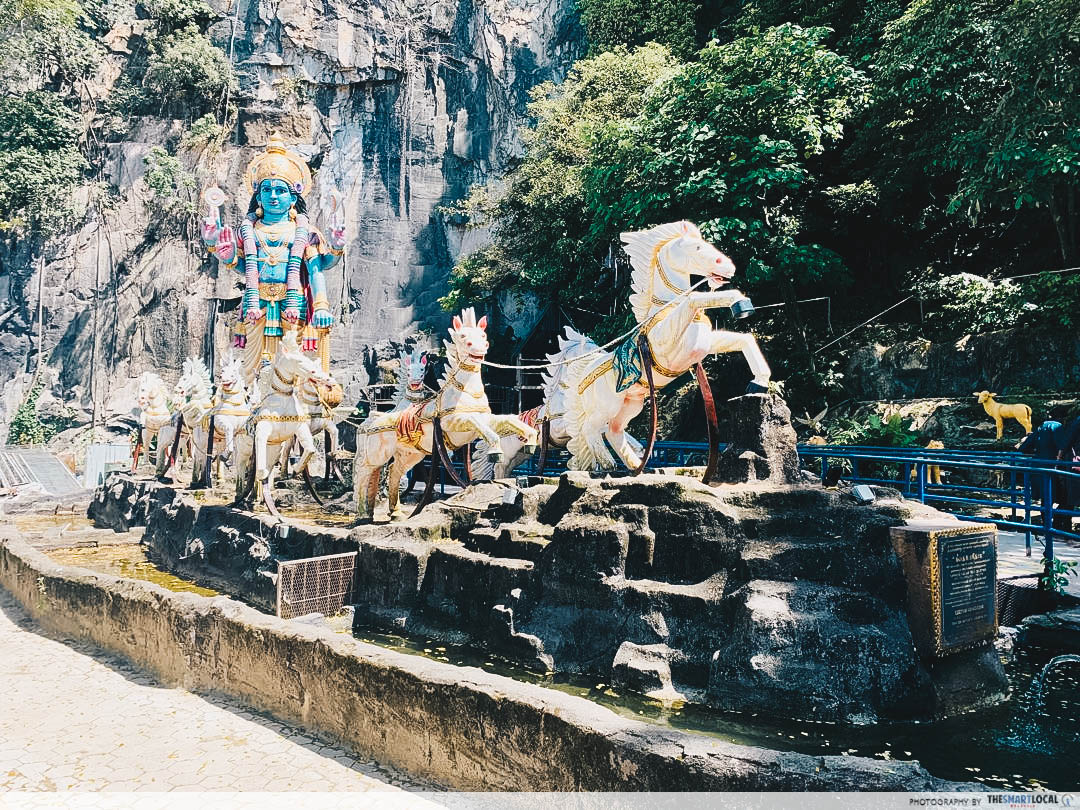
Inside the cave, visitors can marvel at intricately crafted statues of Hindu deities including the formidable Ravana, the towering statue of Kumbhakarna, and the revered lingam, a shrine dedicated to Lord Shiva.
Entrance to the Ramayana Cave is priced RM5/person, with free admission for children.

No celebration is complete without shopping, and the choices here are plenty. Visitors can browse stalls selling bangles, traditional Indian snacks such as laddus and jalebis, and exquisite Indian attire – all while soaking in the celebratory spirit of Lord Murugan.
The best time to visit Batu Caves
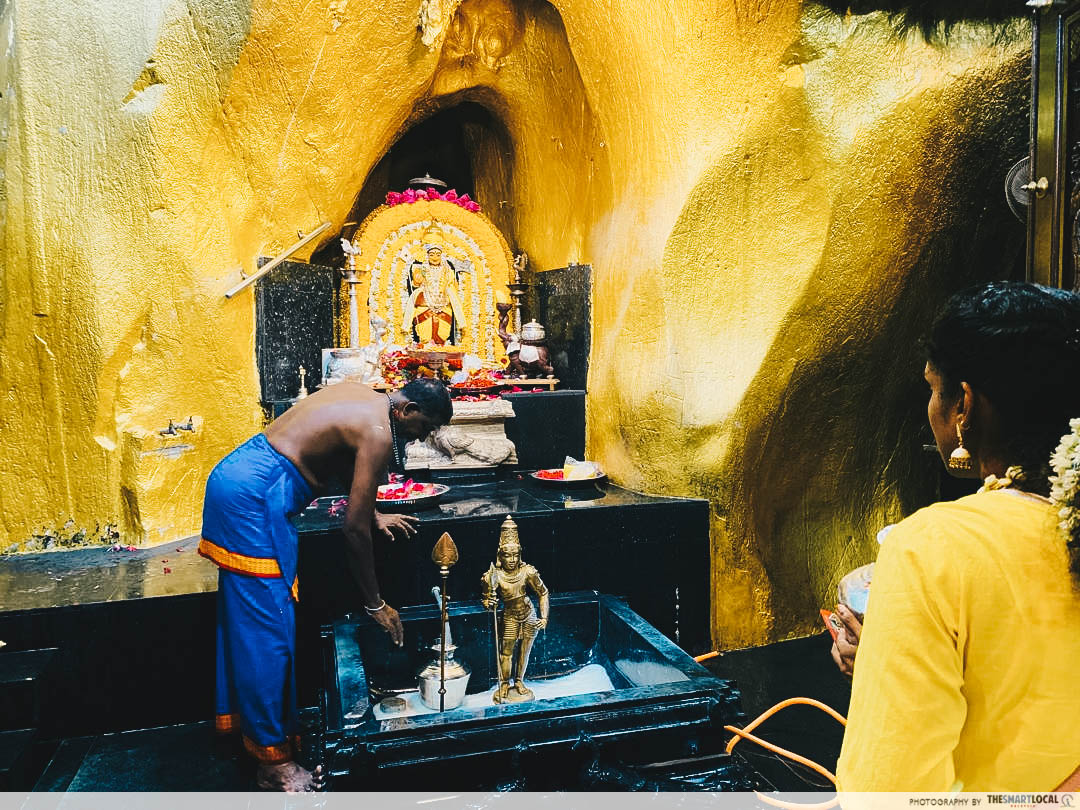
The most spectacular time to visit Batu Caves is during Thaipusam, an annual Hindu festival honouring Lord Murugan. Typically observed in January or February, the festival draws thousands of devotees near and far who seek blessings or express gratitude to the deity.
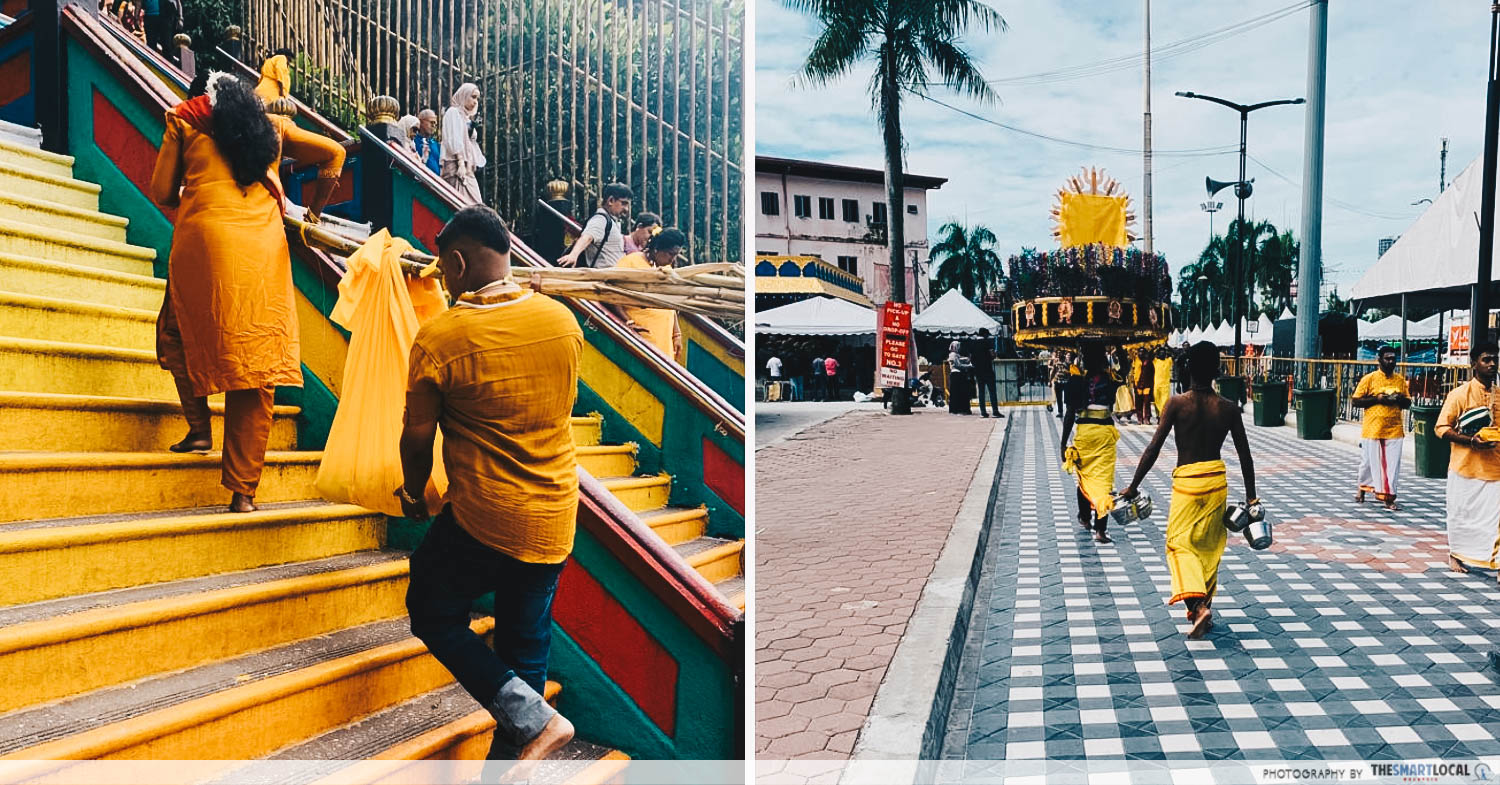
A key highlight of Thaipusam is the sight of kavadi bearers – devotees carrying elaborate structures adorned with decorations as acts of devotion and penance. It is believed that carrying kavadis fulfils vows related to prayers and wishes.
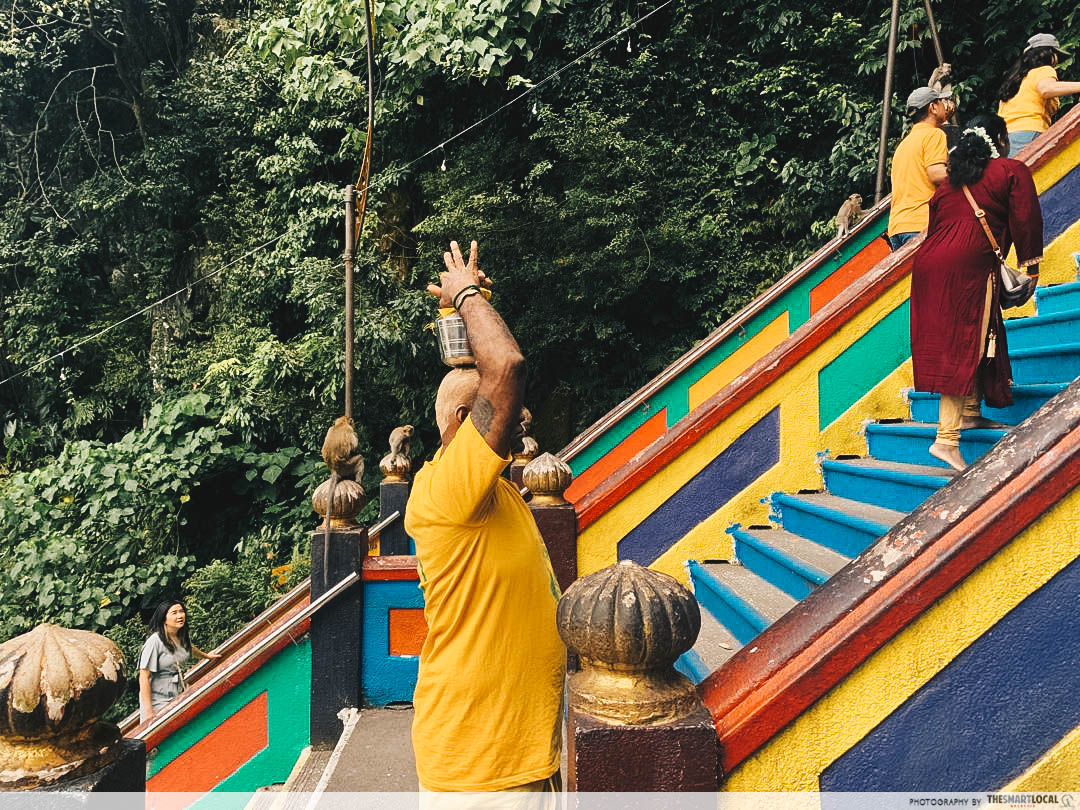
During the celebration, devotees are spotted with paal kudam that’s filled with milk and considered as a sacred offering to Lord Murugan. Carried as an act of devotion, the milk is later poured over the deity’s statue in a ritual known as abhishekam – a holy bathing ceremony.
How to get to Batu Caves
The easiest way to reach Batu Caves is by train. The KTM Komuter offers a direct route from KL Sentral to Batu Caves station, ensuring a smooth and hassle-free journey. Arriving early or taking public transport is highly recommended to avoid congestion.
If you choose to drive, parking can be challenging, especially during Thaipusam when thousands of devotees and tourists gather at the site. Common parking options include roadside spots or designated paid parking areas, typically priced at RM15/entry.
Explore Malaysia’s iconic landmark, Batu Caves
Surrounded by towering limestone cliffs, Batu Caves is a testament to the beauty of both nature and faith which offers an experience that lingers long after the journey ends.
So, whether you seek divine blessings or wish to immerse yourself in cultural heritage, a visit to Batu Caves promises a spectacular encounter with the golden statue of Lord Murugan and the iconic rainbow staircase.
Address: Kawasan Industrial Batu Caves, 68100 Gombak, Selangor
Opening hours: 7am-8.30pm, Daily
Contact: 03-6189 6284 | Batu Caves Temple Facebook
For more reads on places of worship, check out:
- Sri Poyyatha Vinayagar Moorthy temple in Melaka
- Thean Hou Temple in KL
- Stunning Hindu temples in Malaysia
Cover image adapted from: TheSmartLocal Malaysia
Photography by Yusintha.
